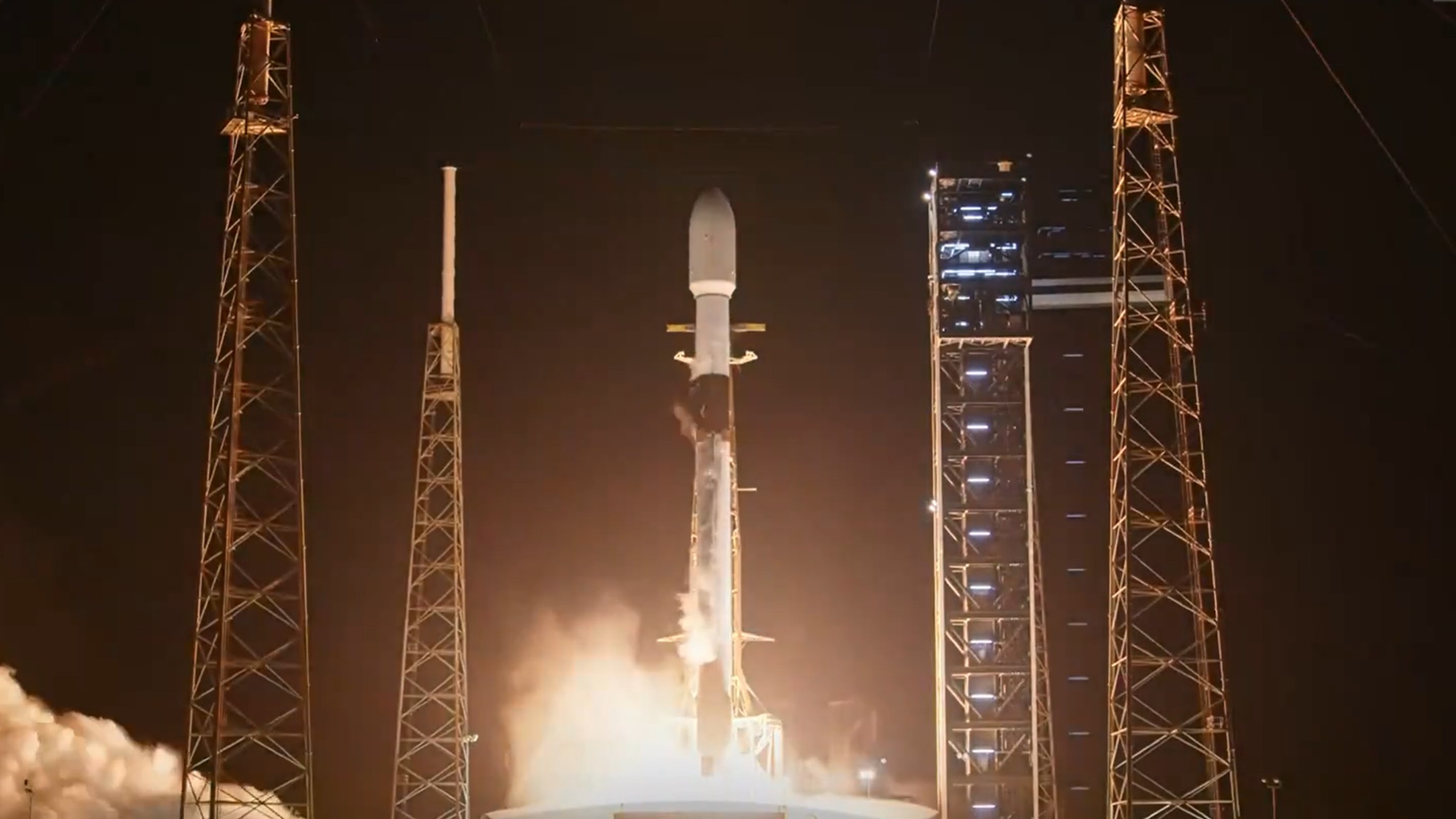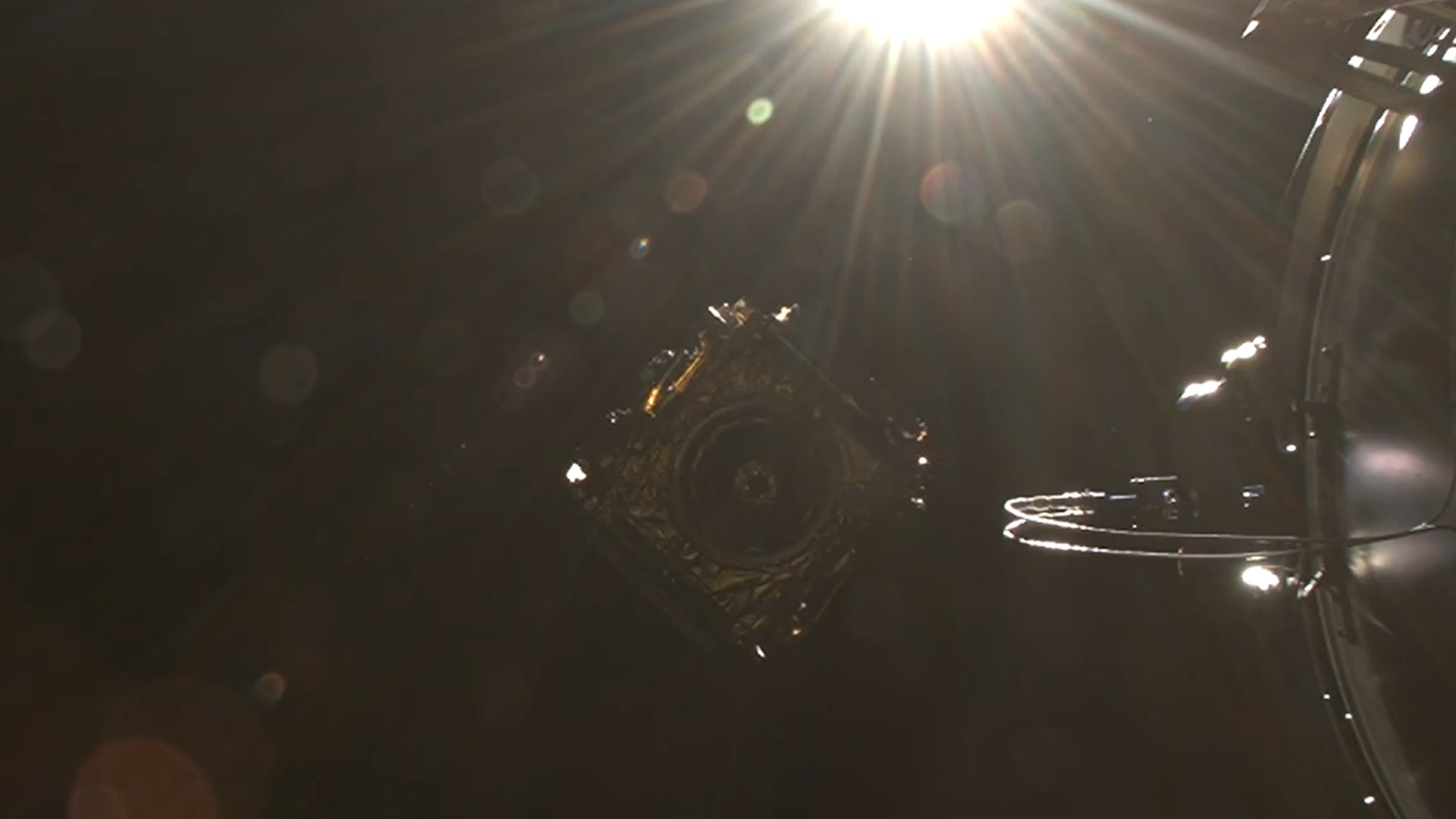SpaceX launched its first Falcon 9 rocket of 2025 tonight, in what should be another busy year for the company.
A SpaceX Falcon 9 rocket took off on Friday (Jan. 3) at 8:27 p.m. EST (0127 GMT) from Space Launch Complex 40 at Cape Canaveral Space Force Station in Florida, launching the Thuraya 4 spacecraft to geosynchronous orbit.
Thuraya 4 is operated by Space42, a satellite and space services company based in the United Arab Emirates. The satellite will provide mobile communications services throughout Europe, the Middle East and Africa for both commercial and government customers.

Eight minutes and 40 seconds after taking off, the Falcon 9 booster returned to Earth for a landing aboard SpaceX’s droneship “A Shortfall of Gravitas” offshore nearby in the Atlantic Ocean.
This was the 20th flight and recovery for this Falcon 9 first stage booster, and SpaceX’s 341st recovery of an orbital-class rocket, including both Falcon 9 and Falcon Heavy boosters.
Falcon 9’s first stage has landed on the A Shortfall of Gravitas droneship pic.twitter.com/DeNJcdfH6tJanuary 4, 2025
The first stage booster that launched today’s mission previously launched the ill-fated ispace Haukto-R moon lander to the lunar surface, an ISS resupply mission as well as 13 batches of SpaceX’s Starlink satellites.
Roughly 35 minutes and 30 seconds into the flight, the Thuraya 4 satellite separated from the rocket’s second stage and deployed into geostationary transfer orbit, where it will then begin raising up to geosynchronous orbit above a fixed spot on Earth.

The Thuraya 4 mission marks SpaceX’s 418th flight of a Falcon 9 rocket, and the company’s 435th mission overall. SpaceX launched more than 130 orbital missions in 2024, and this year’s total is expected to be even higher.
The satellite on today’s flight is known more formally as the Thuraya 4-NGS (Next Generation System) and was built by Airbus. The technologies aboard the satellite will “unlock innovative AI-powered services,” Ali Al Hashemi, CEO of Yahsat Space Services, one of the two companies that form Space42, said in a statement.
Article by:Source brett.tingley@futurenet.com (Brett Tingley)




















